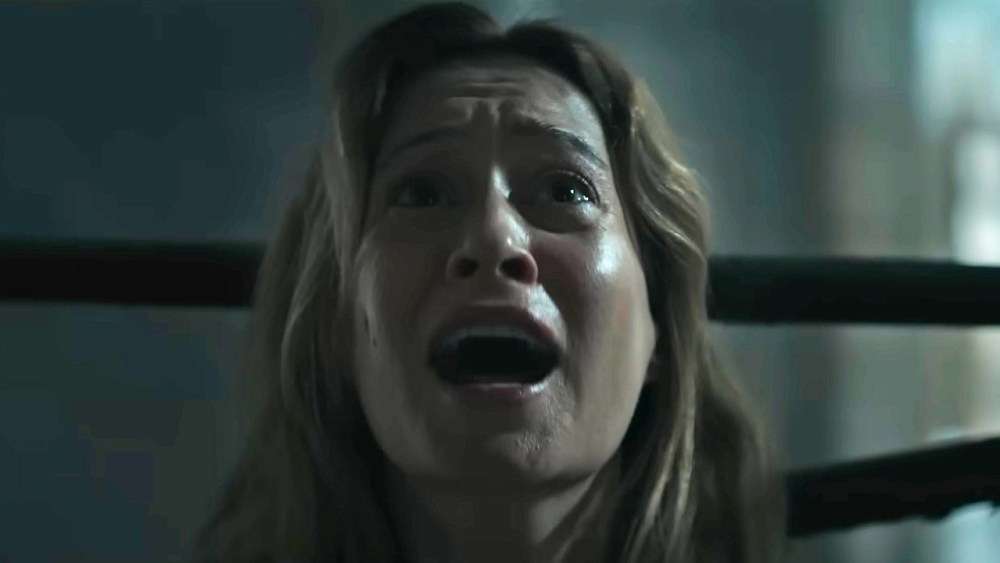The Grim Truth: Director Chris Stuckmann Unpacks the Disturbing Conclusion of Shelby Oaks
Popular Now
 Rust
Rust
 Schedule I
Schedule I
 Fortnite
Fortnite
 Stumble Guys
Stumble Guys
 Warframe
Warframe
 R.E.P.O
R.E.P.O
 Toca Boca World
Toca Boca World
 Candy Crush Saga
Candy Crush Saga
 Counter-Strike 2
Counter-Strike 2
 Grand Theft Auto V
Grand Theft Auto V
 Director Chris Stuckmann’s debut feature, Shelby Oaks, has generated significant buzz and controversy, particularly surrounding its brutal and uncompromising final act. The film’s disturbing ending pivots sharply from a true-crime missing-person narrative to a full-blown demonic horror, revealing a dark, occult conspiracy that is both deeply personal and overwhelmingly sinister.
Director Chris Stuckmann’s debut feature, Shelby Oaks, has generated significant buzz and controversy, particularly surrounding its brutal and uncompromising final act. The film’s disturbing ending pivots sharply from a true-crime missing-person narrative to a full-blown demonic horror, revealing a dark, occult conspiracy that is both deeply personal and overwhelmingly sinister.
The film’s central mystery—the disappearance of paranormal investigator Riley Brennan—is ultimately solved by her sister, Mia (Camille Sullivan). The truth, however, is far worse than any simple abduction or murder, establishing the antagonist demon, Tarion, as the ultimate victor in a years-long plot.
The core elements of the disturbing conclusion are:
- The Revelation of the Incubus: Mia discovers Riley is being held captive by Norma, the mother of the man who left the crucial tape, Wilson Miles. Norma, revealed to be a devotee of the demon Tarion (an incubus), had forced her son to repeatedly sexually assault Riley to conceive a child. This revelation transforms the case from a missing-person file into a horrific, ritualistic plot.
- The Newborn Child: Riley is found alive but imprisoned, having given birth to a “demon seed” baby. Mia rescues her sister and the infant, fulfilling a deeply personal need for a child that had previously strained her marriage.
- Riley’s Tragic Fate: At the hospital, Riley attempts to smother the baby, insisting it is possessed and must be killed. In the ensuing struggle, Mia accidentally pushes Riley out of a window. Riley survives the fall only to be mauled and devoured by Tarion’s hellhounds waiting outside, a moment that was made even more explicit in the final cut with added gore.
 Stuckmann’s Vision: The Ultimate Demonic Victory
Stuckmann’s Vision: The Ultimate Demonic Victory
Stuckmann’s directorial vision for the ending is one of unmitigated doom and demonic triumph. The ending suggests that Tarion’s plan was never simply to kill Riley, but to use her to bear his child and, more crucially, to ensure that the child was left with a new, willing guardian: Mia.
- Mia’s Corruption: Mia’s final action—lovingly embracing the infant after her sister’s brutal death—is the ultimate tragic twist. Her long-standing inability to conceive, established earlier in the film, makes her the perfect, emotionally compromised target for the demon. The final moments show Mia screaming as Tarion appears behind her, grasping her shoulders, and her eyes briefly glow, implying she has now become Tarion’s new vassal or servant, essentially taking Norma’s place.
- Ambiguous Purpose, Clear Consequence: The ambiguity surrounding the demon’s ultimate goals only heightens the terror. As one critique notes, the demon’s plans for the newborn are never fully revealed, but the consequence is clear: the cycle of trauma and occult servitude will continue.
- Themes of Exploitation and Loss of Agency: Beyond the supernatural elements, the ending functions as a harsh commentary on how women (both Riley and Mia) are exploited and stripped of their agency—first by a societal/marital expectation (Mia’s desire for a child) and ultimately by a demonic force. The demon’s success is built upon manipulating Mia’s deepest, most vulnerable longing.
 The needlessly cruel and relentless nature of the final moments has divided critics and audiences, with some praising the film’s unflinching commitment to a grim finale, while others felt it overstepped into tasteless shock value, particularly with the themes of sexual violence and attempted infanticide.
The needlessly cruel and relentless nature of the final moments has divided critics and audiences, with some praising the film’s unflinching commitment to a grim finale, while others felt it overstepped into tasteless shock value, particularly with the themes of sexual violence and attempted infanticide.








